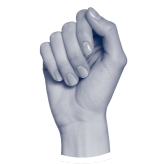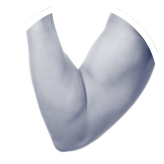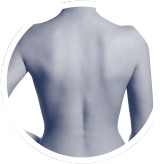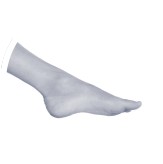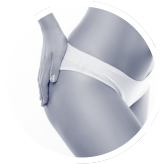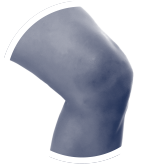
Introduction
Tennis is an exhilarating sport that demands agility, precision, and endurance, but whether you’re a seasoned player or just picking up a racket for the first time, due to the nature of the sport and the increased loads on joints and soft tissues, many players of all age and level are quite likely to injure themselves at some point over the season.
From tennis elbow and shoulder impingement, to calf tears and jumper’s knee the repetitive motions and dynamic nature of tennis can predispose players to a number of different injuries.
In this blog, we’ll delve into the most common tennis injuries, including their causes, symptoms, treatment options, and, most importantly, how to prevent them.
Tennis Elbow: The Bane of the Forearm
Tennis elbow, clinically known as lateral epicondylitis, is a prevalent overuse injury among tennis players. It occurs due to repetitive stress on the tendons that connect the forearm muscles to the elbow’s bony prominence, resulting in inflammation and pain. The backhand stroke, particularly with poor technique or excessive force, is a common culprit behind tennis elbow.
Symptoms of Tennis Elbow:
- Pain and tenderness on the outside of the elbow
- Weakness in gripping or lifting objects
- Worsening pain during racket activities
- Rest and avoiding activities that exacerbate symptoms
- Applying ice packs to reduce inflammation
- Physiotherapy to strengthen forearm muscles and improve flexibility
- Wearing a brace to reduce the strain and excess loading on the tendon
Back Pain: A Persistent Challenge
The dynamic movements and rotations involved in tennis, including serves, volleys, and sudden directional changes, can place significant strain on the spine, leading to various forms of back pain.
Poor core strength, posture, or improper stroke technique, are the main contributing factors to this prevalent issue among tennis enthusiasts.
Symptoms of Back Pain:
- Dull or sharp pain in the lower back
- Stiffness and limited mobility
- Radiating pain down the legs (in cases of nerve compression)
Treatment for Back Pain:
- Rest and avoiding activities that exacerbate back pain
- Gentle stretching and strengthening exercises targeting the core muscles
- Heat therapy or hot packs to alleviate muscle tension
- Seeking advice and treatment from a physiotherapist for targeted exercises and rehabilitation.
Calf Tears: A Hurdle in Motion
Calf tears are either the partial or complete rupture of the calf muscles, and usually occur suddenly during explosive movements such as sprinting, lunging, or pushing off to change direction on the tennis court.
Insufficient warm-up, inadequate flexibility, and overtraining without proper recovery are common predisposing factors for calf tears.
Symptoms of a Calf Tear:
- A sudden, sharp pain in the calf muscle
- Swelling and bruising around the affected area
- Difficulty walking or bearing weight on the injured leg
Treatment for a calf Tear:
- Rest and avoid weight-bearing activities. Depending on the severity, you may need to use crutches for a few days
- Applying ice packs and compression bandages to reduce swelling
- Elevating the leg to promote circulation and reduce inflammation
- Gradual reintroduction of physical activity through a physiotherapy lead rehabilitation programme
Torn Achilles Tendon: A Debilitating Setback
The Achilles tendon, the largest tendon in the body, is essential for transmitting force from the calf muscles to the heel during activities like jumping and running.
A torn Achilles tendon, often resulting from sudden, forceful movements or repetitive stress, can significantly impair mobility and require extensive rehabilitation.
Symptoms of a Torn Achilles:
- Sudden, severe pain in the back of the ankle or calf
- Audible “pop” or snapping sensation at the time of injury
- Swelling and bruising around the heel or ankle
Treatment for a Torn Achilles:
- You need to seek immediate medical attention to assess the extent of the injury
- Immobilisation of the ankle through casting or bracing
- Physiotherapy to restore strength, flexibility, and proprioception if the tear is minor.
- Surgical repair for severe tears or ruptures
Shoulder Impingement: A Hindrance to Serve
Shoulder impingement syndrome is characterised by the compression of the tendons and bursa (fluid filled sack) within the shoulder joint. It’s a common complaint among tennis players, particularly those who frequently perform overhead motions such as serving and smashing.
Poor shoulder mechanics, muscle imbalances, and inadequate warm-up contribute to the development of this condition.
Symptoms of Shoulder Impingement:
- Pain and discomfort in the shoulder, especially when reaching overhead or behind the back
- Weakness and loss of range of motion in the shoulder joint
- Crepitus or grinding sensation with movement
- Rest and avoiding activities that aggravate shoulder pain
- Physical therapy to improve shoulder mechanics and strengthen surrounding muscles
- Anti-inflammatory medications or corticosteroid injections to alleviate pain and inflammation
- Modification of racket technique to minimise strain on the shoulder joint
Jumper’s Knee: A Strain on Stability
Jumper’s knee, medically known as patellar tendinopathy or tendonitis, is a common overuse injury characterised by pain and inflammation in the patellar tendon, which connects the kneecap to the shinbone.
The repetitive jumping, landing, and sudden changes in direction inherent to tennis can exacerbate this condition, especially in players with biomechanical deficiencies or muscular imbalances.
Symptoms of Jumper’s Knee:
- Pain and tenderness around the patellar tendon, just below the kneecap
- Stiffness and swelling in the knee joint
- Worsening pain during activities that involve jumping or squatting
Treatment for Jumper’s Knee:
- Rest and avoiding high-impact activities that strain the knee joint
- Eccentric strengthening exercises targeting the quadriceps and hamstrings
- Patellar tendon bracing or taping to alleviate pressure on the tendon
- Shockwave therapy or platelet-rich plasma (PRP) injections for refractory cases
Prevention is Key: Safeguarding Against Tennis Injuries
While injuries are an inherent risk in any physical activity, there are several strategies tennis players can employ to minimise their susceptibility to common injuries:
- Proper Technique: Invest time in learning and practising correct stroke mechanics to reduce strain on vulnerable joints and muscles.
- Warm-up and Stretch: Prioritise dynamic warm-up exercises and stretching routines to prepare the body for the demands of tennis.
- Strength and Conditioning: Incorporate strength training, flexibility exercises, and core stabilisation drills into your fitness regimen to improve overall resilience.
- Equipment Maintenance: Ensure your racket grip size, string tension, and footwear are appropriate for your playing style and biomechanics.
- Gradual Progression: Avoid overtraining and allow adequate rest between practice sessions to prevent cumulative fatigue and overuse injuries.
- Listen to Your Body: Pay attention to warning signs such as pain, stiffness, or discomfort, and modify your activity level accordingly to prevent exacerbating injuries.
Seeking Treatment: What to Do if You Get Injured
In the event of an injury, prompt and appropriate management is essential to facilitate recovery and prevent long-term complications:
- R.I.C.E. Protocol: Follow the R.I.C.E. (Rest, Ice, Compression, Elevation) protocol as soon as possible after sustaining an acute injury, this will help to reduce pain and inflammation.
- Consult a Healthcare Professional: Seek assessment and treatment from a qualified healthcare provider, such as a physiotherapist, sports medicine or orthopaedic consultant.
- Adhere to Rehabilitation Protocol: Commit to a structured rehabilitation program tailored to your specific injury under the guidance of a rehabilitation specialist.
- Gradual Return to Play: Gradually reintroduce tennis-related activities once cleared by your healthcare.
London Bridge Orthopaedics is a private London orthopaedic clinic with a team of 14 leading private orthopaedic surgeons, each of whom have developed an expertise in the management and treatment of specific areas of musculoskeletal conditions.
The clinic is based in our headquarters at The Shard and we work in partnership with one of the largest and most respected private hospitals in the United Kingdom, London Bridge Hospital, and so have access to comprehensive, state-of-the-art medical facilities.
If you have sustained an injury and need an orthopaedic opinion, please don’t hesitate to get in touch to book an appointment.
You can either call our booking line 020 4584 3585 or complete an online booking form.
For more orthopaedic news, follow London Bridge Orthopaedics on Twitter, Facebook and LinkedIn.


